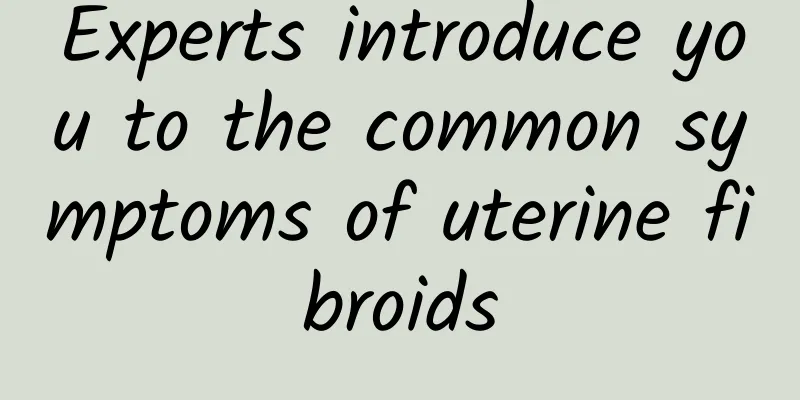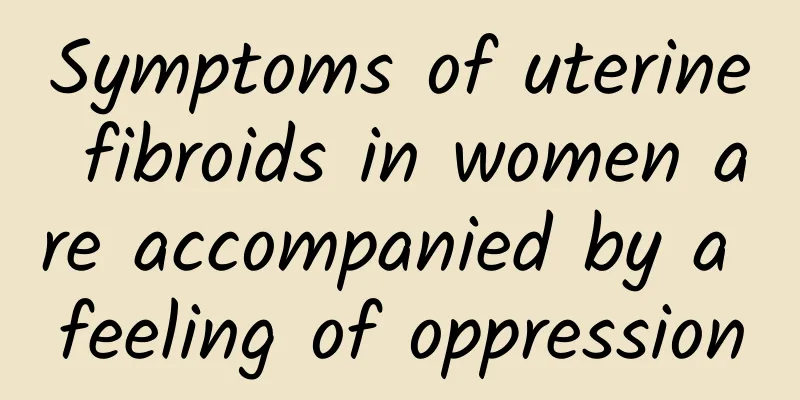Experts introduce you to the common symptoms of uterine fibroids

|
Uterine fibroids are common benign tumors in the female uterus. The key to its treatment is early detection. However, the early symptoms of uterine fibroids are not obvious and are often ignored by female friends. In response to this problem, experts introduce the three common symptoms of uterine fibroids to you, hoping to help you detect uterine fibroids early. One of the common symptoms of uterine fibroids is anemia: Uterine bleeding is the main symptom of uterine fibroids, which occurs in half or more of the patients. Patients with uterine fibroids who have long-term bleeding and are not treated in time may develop anemia. When fibroids enlarge the uterine cavity, increase the area of the endometrium, poor uterine contraction or excessive endometrial hyperplasia, or submucosal fibroids, they may manifest as prolonged menstruation, menorrhagia or irregular vaginal bleeding. Among them, cyclical bleeding is the most common, accounting for about 2/3, while non-cyclical bleeding accounts for 1/3. Common symptoms of uterine fibroids: abnormal menstruation: shortened menstrual cycle, about once every 20 days, longer menstrual period, increased bleeding Common symptoms of uterine fibroids: Abdominal mass: Uterine fibroids are less than 3 months of pregnancy. The uterus is large, and it is generally not easy to touch the mass through the abdomen. Those that can be touched are generally in the middle of the lower abdomen, hard, and mostly uneven. In patients with thin abdominal walls, the outline of the tumor can be clearly felt, and even its shape can be seen. When the tumor is large or grows too fast, patients with uterine fibroids can often feel a mass in the middle of the lower abdomen. The texture is hard, especially in the morning when the bladder is full, and it is easier to feel, and may be accompanied by a feeling of falling. Abdominal mass is often the main complaint of patients with uterine fibroids, which can be as high as 69.6%. Sometimes it may be the only symptom of fibroids. Uterine fibroids are generally located in the middle of the lower abdomen, and a few may be located on one side of the lower abdomen. They are hard or have a sense of unevenness; larger ones are often degenerated, softer and smoother; most grow slowly; very few grow faster or are accompanied by dull pain, and malignant changes should be suspected. The above are the common symptoms of uterine fibroids. I believe you have already understood them. If you have the above symptoms of uterine fibroids, you must pay attention to them and go to a regular hospital for diagnosis and treatment in time. If you have other questions about uterine fibroids, please consult our online experts, who will answer your questions in detail. Feihua Health Network wishes you good health! Uterine fibroids http://www..com.cn/fuke/zgjl/ |
<<: What are the specific causes of uterine fibroids?
>>: What are the misunderstandings about the treatment of dysmenorrhea?
Recommend
What does cervical nabothian cyst mean?
Cervical nabothian cyst is a common benign lesion...
What are the symptoms of uterine fibroids? Can B-ultrasound diagnose uterine fibroids?
Uterine fibroids are a disease that many people w...
Will the stomach hurt after miscarriage? Check out the following content
Women must take good care of themselves in the ea...
Let’s discuss what are the health care measures for cervical hypertrophy?
In order to cure the disease of cervical hypertro...
Where does an ovarian cyst usually hurt?
Ovarian cysts generally cause pain in the right l...
What are the main symptoms of chronic pelvic inflammatory disease?
What are the main symptoms of chronic pelvic infl...
Diabetes can easily cause muscle weakness! Teacher Wei recommends a little secret for strength training...
Regular exercise, diet and medication are the thr...
What can I eat to make my uterine fibroids grow slower? What can I eat to make my uterine fibroids smaller?
Uterine fibroids are common benign tumors in gyne...
Stomach discomfort during menstruation
Stomach discomfort during menstruation If you hav...
Treatment of dysmenorrhea due to uterine coldness
Qingcheng is just 20 years old this year, but she...
What are the hospitals that treat menopause?
In life, many female friends are troubled by meno...
The new star of local body sculpting - painless lipolysis in vitro
Women should be strong and lose weight without pa...
What harm does uterine fluid cause?
The uterus is a product of cervical inflammatory ...
There is a blacklist for souvenirs! Fruit is my favorite
The New Year is approaching, and everyone loves t...
Is exercise always a three-minute enthusiasm? Laughter makes people more likely to exercise
Regular exercise is good for health, but many peo...









